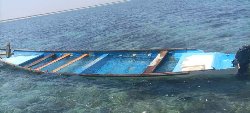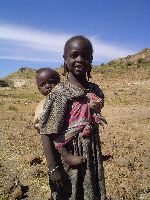Cablegate: Peace Labs: The Bottom-Up Approach to Governance,
VZCZCXYZ0005
PP RUEHWEB
DE RUEHBO #3982/01 3052157
ZNR UUUUU ZZH
P 312157Z OCT 08
FM AMEMBASSY BOGOTA
TO RUEHC/SECSTATE WASHDC PRIORITY 5352
INFO RUEHCV/AMEMBASSY CARACAS PRIORITY 1256
RUEHLP/AMEMBASSY LA PAZ OCT 9751
RUEHPE/AMEMBASSY LIMA PRIORITY 6703
RUEHZP/AMEMBASSY PANAMA PRIORITY 2581
RUEHQT/AMEMBASSY QUITO PRIORITY 7396
RUEHGL/AMCONSUL GUAYAQUIL PRIORITY 4670
RUEHBS/USEU BRUSSELS PRIORITY
RUEKJCS/SECDEF WASHDC PRIORITY
RHEHNSC/NSC WASHDC PRIORITY
RUEAIIA/CIA WASHDC PRIORITY
RUCNDTA/USMISSION USUN NEW YORK PRIORITY 1953
UNCLAS BOGOTA 003982
SENSITIVE
SIPDIS
E.O. 12958: N/A
TAGS: PGOV PINR PTER PHUM EAID SNAR CO
SUBJECT: PEACE LABS: THE BOTTOM-UP APPROACH TO GOVERNANCE,
PEACE AND DEVELOPMENT
REF: A. BOGOTA 3582 B. 07 BOGOTA 8068
Summary
-------
1. (U) The European Commission (EC), along with the GOC
Accion Social's Peace and Development Program (PDP), helped
found and support three "Peace Laboratories" in six different
regions. The "Peace Laboratories" focus on three key areas:
supporting human rights and local peace initiatives,
strengthening local institutions, and promoting sustainable
development. Total funding for the Peace Laboratories from
2002-present is 113.8 million Euros (approximately $145
million dollars), with 81% from the EU and 19% from the GOC.
Implementation challenges include disconnects between local
communities and GOC objectives, lack of security in conflict
areas, and weak coordination between the Peace Laboratories
and other GOC initiatives. We have not provided any funding
to the Peace Laboratories, but coordinate our activities in
specific regions such as Medio Magdalena. End Summary.
Origins of Peace Laboratories
-----------------------------
2. (U) In 1995, ECOPETROL, the Petroleum Workers Union (USO),
the Economic Society of Friends of the Country (SEAP), the
Jesuit Center for Investigation and Education (CINEP) and the
Catholic church set up the first "Peace Laboratory" in the
Medio Magdalena region in response to the widespread violence
that had plagued the area since the 1980s. Peace Laboratory
I was established to address the lack of state presence,
protect human rights, broaden political space, and promote
social and development programs. Ana-Maria Mojica, European
Commission Coordinator for the Peace Laboratories Program,
told us the basic purpose was to help the local communities
survive in the face of FARC, ELN and paramilitary disputes
over control of territory and coca production. Peace
Laboratory I covers 30 municipalities in four
departments--Cesar, Santander, Bolivar and Antioquia.
3. (U) Since the creation of the initial Peace Laboratory,
the European Commission (EC) has started three new phases of
"Peace Laboratories" in six different regions. Peace
Laboratory I (est. 2002) is a continuation of the initial
Peace Laboratory in the Medio Magdalena. Peace Laboratory II
(est. 2004) operates in eastern Antioquia, Cauca/Narino
border, and Norte de Santander. Peace Laboratory III (est.
2006) operates in Meta and Montes de Maria. Project
oversight falls mainly to the Peace and Development Program
(PDP) of Accion Social and the European Commission.
Peace Laboratories Focus, Themes and Regions
--------------------------------------------
4. (U) The Peace Laboratories focus on three key areas: 1)
supporting human rights and peace initiatives, 2)
strengthening social services and institutions, and 3)
promoting sustainable development. They work with local
institutions, specifically with PDP subsidiaries in each
region, as well as the church. In addition to the three
priority areas, Peace Laboratory III also aims to support
vulnerable groups, especially those disproportionately
affected by the conflict such as indigenous, Afro-colombians,
women, and youth. Politically, Peace Laboratories III funds
local and regional initiatives to enhance civil society
participation in peace and development processes. Working
through implementing agents in each region--CORDEPAZ in Meta
and Fundacion Red Desarrollo y Paz de los Montes de
Maria--they also hold monthly meetings with civil society,
the GOC and local governments, and non-governmental groups.
Peace Laboratory Achievements
-----------------------------
5. (U) Each of the three Peace Laboratories is at different
stages of implementation. Peace Laboratory I is in the final
stages of handing over its programs to local implementers
Peace Laboratory I has helped create eight humanitarian
spaces--staffed with local human rights ombudsman--in the 30
municipalities of Medio Magdalena. The ombudsmen have
attended to 1188 human rights petitions. Peace Laboratory I
also reports that it has helped 43,557 families in the
region, planted 9085 hectares of land with alternative crops
such as cocao, palma, cafe, fruits, and beans, created 4623
new jobs, and provided microcredit to 1292 families. It has
also helped title 791 plots of land and is in the process of
titling 4623 additional plots, Through other small projects,
Peace Laboratory I has also supported 119 community groups,
provided infrastructure grants to 23 schools, and improved
100 kilometers of roads. Peace Laboratory II reports similar
results; Peace Laboratory III is only now awarding contracts
for its projects.
Funding Sources
---------------
6. (U) The majority of funding for the Peace Laboratories has
come from the European Commission, but the GOC also provides
funding via a World Bank loan. To date, Mojica said, the
Peace Laboratories projects have received and obligated 113.8
million Euros ($145 million dollars), with the EC providing
92 million Euros ($117 million dollars) and the GOC/World
Bank providing 21.8 million Euros ($28 million dollars).
Peace Laboratory I received 42.22 million Euros ($54 million
dollars) of funding, and Peace Laboratory II has received
41.4 million Euros ($53 million dollars). Peace Laboratory
III began in 2006 with a handful of pilot programs, and is
now selecting additional projects worth 30.2 million Euros
($38.5 million dollars). The Laboratories received 26
million Euros ($33 million dollars) this year from the EC to
continue the project and hopes to be awarded another 40
million Euros ($51 million dollars) over the next two years.
7. (U) These funds support individual projects and
administrative costs. Eighty percent of program funds have
gone to sustainable development programs, with the remaining
20 percent split between human rights/peace initiatives and
governance/institution building. UNDP also funded thematic
advisors for Montes de Maria, while ECOPETROL funds an
anti-youth recruitment program in conjunction with Peace
Laboratory III in Meta.
Obstacles to Implementation
---------------------------
8. (SBU) European Commission Director of Peace Laboratory III
Johny Ariza told us the programs face implementation
challenges in all regions, with conflicts between local,
regional, and national priorities a constant issue. Civil
society and local government leaders often push for
sustainable development projects and programs focused on the
resolution of past conflicts. These projects frequently
clash with national policies. Ariza told us that some of the
most problematic disconnects are with the Ministries of
Agriculture, Interior, and Mines over resource allocation
and program prioritization. The Agricultural Ministry
frequently favors large, corporate investments over projects
to assist peasant farmers. Ariza said that since the Peace
Laboratories are not part of a national strategy, it is
difficult for Accion Social or the EC to exert much influence
over the ministries.
9. (SBU) Security also remains an ongoing concern in the six
regions where the Peace Laboratories operate. Libarado
Valderrama, Director of Peace Laboratory I in Medio
Magdalena, told us security remains a major problem in some
areas, especially in southern Bolivar and Cesar Departments.
In early 2008, a USAID Colombian contractor working on
alternative development programs was killed by members of a
criminal group in southern Bolivar. Similar security
challenges have hampered implementation in other regions,
with threats coming mainly from the FARC and criminal groups.
Coordination a Problem
----------------------
10. (SBU) There is little cooperation between the Peace
Laboratories and other Accion Social programs, such as the
Center for Coordinated and Integrated Action (CCAI),
explained Everardo Murillo Sanchez, Director of the Peace and
Development Program (PDP) of Accion Social. The Peace
Laboratories and CCAI work in some of the same areas, but
CCAI takes a top-down approach, while PDP is bottom-up. The
programs also have different mandates, with CCAI focused on
establishing a state presence in conflictive areas, and PDP
centered on development, human rights and reconciliation.
Murillo said that due to the "militarization" of CCAI
programs, he wants to keep a distance from the program. He
also rejected making coca eradication a requirement for
participation in Peace Laboratory activities as it is done in
other Accion Social programs, and sharply criticized USG and
GOC coca spray programs.
11. (U) Still, the Peace Laboratories have attempted limited,
informal coordination with Accion Social and the USG in
specific areas. In Meta and Montes de Maria, CCAI and the
Peace Laboratories are attempting some informal coordination.
Murillo said Father Rafael Castillo in Montes de Maria works
closely with CCAI to help focus their programs. Alvaro
Balcazas, the civilian director of CCAI's main effort
consolidation effort in Meta, told us he has met with the PDP
coordinators for Meta to learn about each other's programs.
The USG has not provided funding directly to the Peace
Laboratories, but USAID is working to coordinate alternative
development programs in the six regions, including the Medio
Magdalena. GOC Peace Commissioner Luis Carlos Restrepo, told
us that there is discussion within the GOC about
consolidating the different consolidation, peace,
development, and reconciliation programs into a cohesive
national strategy, but that this remains in the early stages.
BROWNFIELD


 UN News: Ceasefire The Only Way To End Killing And Injuring Of Children In Gaza
UN News: Ceasefire The Only Way To End Killing And Injuring Of Children In Gaza ICHRP: US-Japan-Philippines Trilateral Summit Makes The Philippines A Battlefield For US-China Conflict
ICHRP: US-Japan-Philippines Trilateral Summit Makes The Philippines A Battlefield For US-China Conflict East West Center: Environmental Journalist Alexander Kaufman Receives East-West Center’s Inaugural Melvin M.S. Goo Writing Fellowship
East West Center: Environmental Journalist Alexander Kaufman Receives East-West Center’s Inaugural Melvin M.S. Goo Writing Fellowship Compassion in World Farming: Octopus Farm Must Be Stopped, Say Campaigners
Compassion in World Farming: Octopus Farm Must Be Stopped, Say Campaigners UN News: Shipwreck Tragedy Off Djibouti Coast, Drone Attacks Continue At Ukraine Nuclear Plant, Madagascar Cyclone Update
UN News: Shipwreck Tragedy Off Djibouti Coast, Drone Attacks Continue At Ukraine Nuclear Plant, Madagascar Cyclone Update UN News: Aid Lifeline Reaches Sudan's Darfur Region In Bid To Avert ‘Hunger Catastrophe’
UN News: Aid Lifeline Reaches Sudan's Darfur Region In Bid To Avert ‘Hunger Catastrophe’